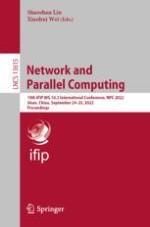2022 | Book
Network and Parallel Computing
19th IFIP WG 10.3 International Conference, NPC 2022, Jinan, China, September 24–25, 2022, Proceedings
Editors: Shaoshan Liu, Xiaohui Wei
Publisher: Springer Nature Switzerland
Book Series : Lecture Notes in Computer Science
